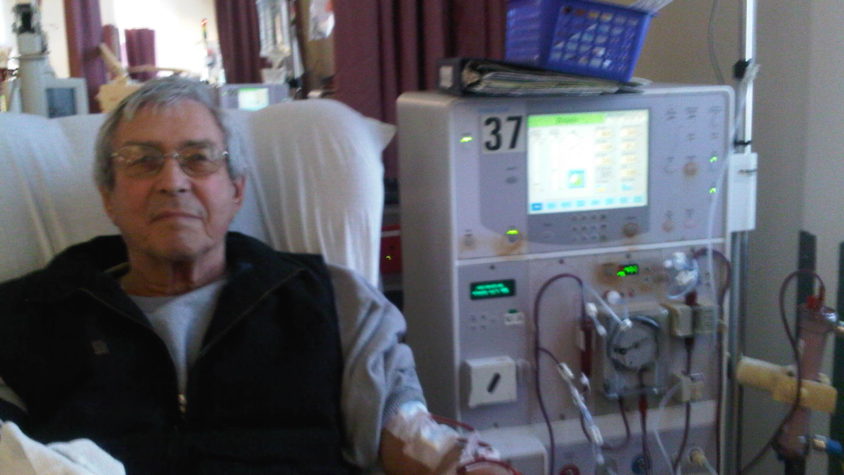By Mark Ryan Unresponsive, bed bound and breathing with the aid of an oxygen mask, it looked like the elderly man’s days were numbered. He hadn’t opened his eyes or spoken in two days in the intensive care unit at Buffalo General Medical Center. Chronic kidney disease had progressed to the p...
By Mark Ryan
Unresponsive, bed bound and breathing with the aid of an oxygen mask, it looked like the elderly man’s days were numbered.
He hadn’t opened his eyes or spoken in two days in the intensive care unit at Buffalo General Medical Center. Chronic kidney disease had progressed to the point where prescribed diuretics weren’t working, and weight gain from fluid retention was causing difficulty walking and cardiac issues.
According to the Centers for Disease Control and Prevention (CDC National Chronic Kidney Disease Fact Sheet, 2017), the 87-year-old man would be only one of about 30 million American adults – or 15 percent of the nation – battling chronic kidney disease. Chronic kidney disease is a condition in which the kidneys cannot properly filter the blood, resulting in excess fluid and toxic waste remaining in the body.
While family members feared a bad prognosis, Dr. Nagaraja Sridhar, the optimistic nephrologist, insisted the patient’s chances for recovery were good with dialysis treatments. He stressed that the kidneys, lungs and heart all worked together, explaining the need to monitor with daily lab tests such as serum creatinine and potassium, blood urea nitrogen (BUN), glomerular filtration rate (GFR), hemoglobin and hematocrit.
As predicted, with a treatment regimen that included emergency hemodialysis, the patient’s fluid build-up subsided, and he gained some strength. The improvement was dramatic.
Coincidentally (or not), it was shortly after the hospital chaplain, Reverend Patrick Fernandes, had paid a visit to the ICU when the patient first opened his eyes and started talking.
The motivated man transferred from ICU to a medical floor, still alive and kicking – literally, with his assigned physical therapist, Tom Panek, working to strengthen his leg muscles.
Like approximately 500,000 other Americans with failing kidneys, the patient is now receiving hemodialysis, the most common type of dialysis, three times a week. His blood is filtered through an external circuit, then pumped back into the body in sessions that last between three and five hours.
Dialysis is one of the medical success stories of recent decades. It continues to be an accessible and life-prolonging treatment for those with end-stage renal disease. The process has been refined and safety measures have become state of the art. The most current data provided by the United States Renal Data System reveals increasing survival rates among this vulnerable population.
Dialysis has its drawbacks, for sure, but there is one big advantage for anyone who isn’t a candidate for kidney transplantation: staying alive.
Thanks to an underrated medical procedure with a mostly bad reputation – and wonderful caregivers at Buffalo General Medical Center – the 87-year-old man will soon be returning home to his family.

